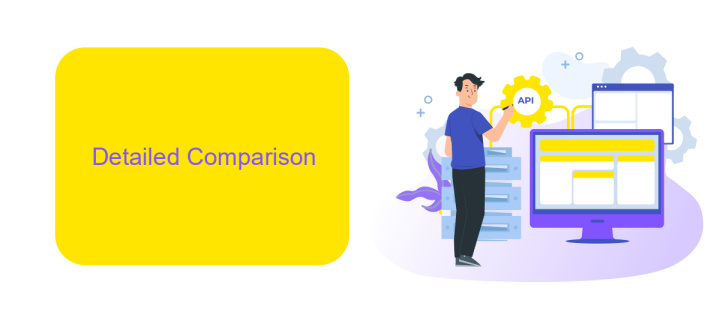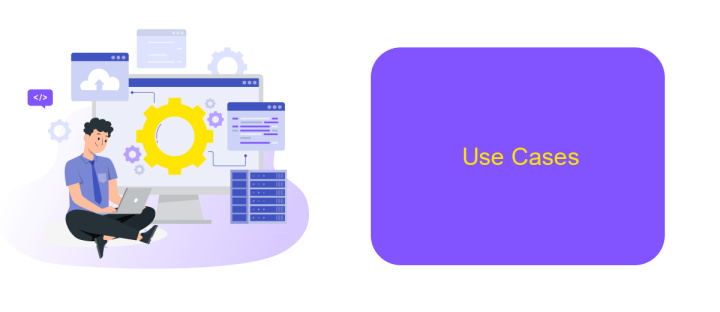UiPath Robotic Process Automation Vs Zapier
In the rapidly evolving landscape of automation, UiPath Robotic Process Automation (RPA) and Zapier stand out as two powerful tools for streamlining business processes. While UiPath offers comprehensive, enterprise-grade automation solutions, Zapier focuses on user-friendly, no-code integrations for smaller tasks. This article delves into the key differences, strengths, and use cases of each platform to help you decide which best suits your needs.
Introduction
In today's fast-paced digital landscape, businesses are constantly seeking ways to streamline operations and enhance productivity. Two popular tools that facilitate automation and integration are UiPath Robotic Process Automation (RPA) and Zapier. Both platforms offer unique features and capabilities, catering to different automation needs and preferences.
- UiPath RPA: Focuses on automating complex, repetitive tasks using advanced robotics and machine learning.
- Zapier: Simplifies the process of connecting different web applications to automate workflows without requiring coding skills.
- ApiX-Drive: An integration service that helps businesses effortlessly connect various applications, enhancing both UiPath and Zapier capabilities.
Understanding the strengths and limitations of UiPath RPA and Zapier is crucial for selecting the right tool for your business. While UiPath excels in handling intricate automation processes, Zapier stands out for its ease of use in connecting multiple apps. Additionally, leveraging services like ApiX-Drive can further streamline and optimize your automation efforts, ensuring seamless integration and improved efficiency.
Detailed Comparison

UiPath Robotic Process Automation (RPA) and Zapier are both powerful tools for automating tasks, but they serve different purposes and have distinct features. UiPath is designed for complex, enterprise-level automation, offering advanced capabilities such as AI integration, computer vision, and extensive workflow customization. It is ideal for businesses looking to automate intricate processes across multiple systems. On the other hand, Zapier focuses on simplifying automation for smaller tasks and integrations between web applications. It is user-friendly and does not require extensive technical knowledge, making it suitable for small to medium-sized businesses.
When it comes to integration capabilities, UiPath provides robust solutions that can be customized to fit specific enterprise needs, often requiring dedicated IT support. Zapier, however, excels in its ease of use, allowing users to quickly set up "Zaps" to connect different apps with minimal effort. For businesses looking to streamline integrations without complex setups, services like ApiX-Drive can be a game-changer, offering an intuitive platform to automate workflows between various applications efficiently. Ultimately, the choice between UiPath and Zapier depends on the scale and complexity of the automation needs of the business.
Key Differences

UiPath and Zapier both offer powerful automation capabilities, but they cater to different needs and use cases. UiPath is primarily designed for enterprise-level robotic process automation (RPA), while Zapier focuses on simplifying workflow automation for small to medium-sized businesses and individual users.
- Target Audience: UiPath is suited for large enterprises with complex automation needs, whereas Zapier is ideal for smaller teams and individual users looking for easy-to-implement solutions.
- Complexity and Flexibility: UiPath offers more advanced features and customization options, making it suitable for intricate processes. Zapier, on the other hand, provides a user-friendly interface and pre-built integrations for quick setup.
- Integration Capabilities: While both platforms support numerous integrations, UiPath excels in integrating with enterprise systems. Zapier integrates well with popular web applications and can be further enhanced using services like ApiX-Drive for more specialized needs.
In summary, UiPath is a robust solution for enterprises requiring detailed and scalable automation, while Zapier is perfect for individuals and small businesses seeking straightforward and efficient workflow automation. Understanding these key differences can help you choose the right tool for your specific requirements.
Use Cases

UiPath and Zapier are two powerful tools for automating tasks, but they cater to different use cases. UiPath is primarily designed for complex, enterprise-level robotic process automation (RPA), whereas Zapier is more suited for simple, no-code integrations between various web applications.
For businesses that require intricate workflows involving multiple systems, UiPath is the go-to solution. It excels in automating repetitive tasks that involve legacy systems, databases, and ERP software. On the other hand, Zapier is ideal for small to medium-sized businesses looking to streamline their operations by connecting apps and automating workflows with minimal technical expertise.
- UiPath: Automating data entry and extraction from multiple sources
- UiPath: Integrating legacy systems with modern applications
- Zapier: Connecting CRM tools with email marketing platforms
- Zapier: Automating social media posting and monitoring
Both platforms offer distinct advantages depending on the complexity and scale of the tasks. For those needing a middle ground, services like ApiX-Drive can help bridge the gap by offering easy-to-configure integrations that connect various applications without extensive coding, making it a versatile choice for a wide range of automation needs.
Conclusion
In summary, both UiPath Robotic Process Automation (RPA) and Zapier offer robust solutions for automating workflows, but they cater to different needs and expertise levels. UiPath excels in handling complex, large-scale automation tasks that require advanced capabilities and customizations. It is ideal for enterprises looking to automate intricate processes across various applications and systems. On the other hand, Zapier is more suited for small to medium-sized businesses and individuals who need straightforward, no-code automation for everyday tasks. Its user-friendly interface and vast library of integrations make it accessible to non-technical users.
For those looking to bridge the gap between these platforms or integrate them with other services, ApiX-Drive can be a valuable tool. ApiX-Drive simplifies the process of connecting different applications and automating data transfers, making it easier to create seamless workflows without extensive technical knowledge. Ultimately, the choice between UiPath and Zapier depends on the specific requirements and technical expertise of the user, but both platforms offer significant benefits in enhancing productivity and efficiency.
- Automate the work of an online store or landing
- Empower through integration
- Don't spend money on programmers and integrators
- Save time by automating routine tasks
FAQ
What is the primary difference between UiPath and Zapier?
Can UiPath and Zapier be used together?
Which platform is more user-friendly for non-technical users?
How do I decide which platform is right for my business?
Are there services available to help implement and integrate these automation tools?
Apix-Drive will help optimize business processes, save you from a lot of routine tasks and unnecessary costs for automation, attracting additional specialists. Try setting up a free test connection with ApiX-Drive and see for yourself. Now you have to think about where to invest the freed time and money!


